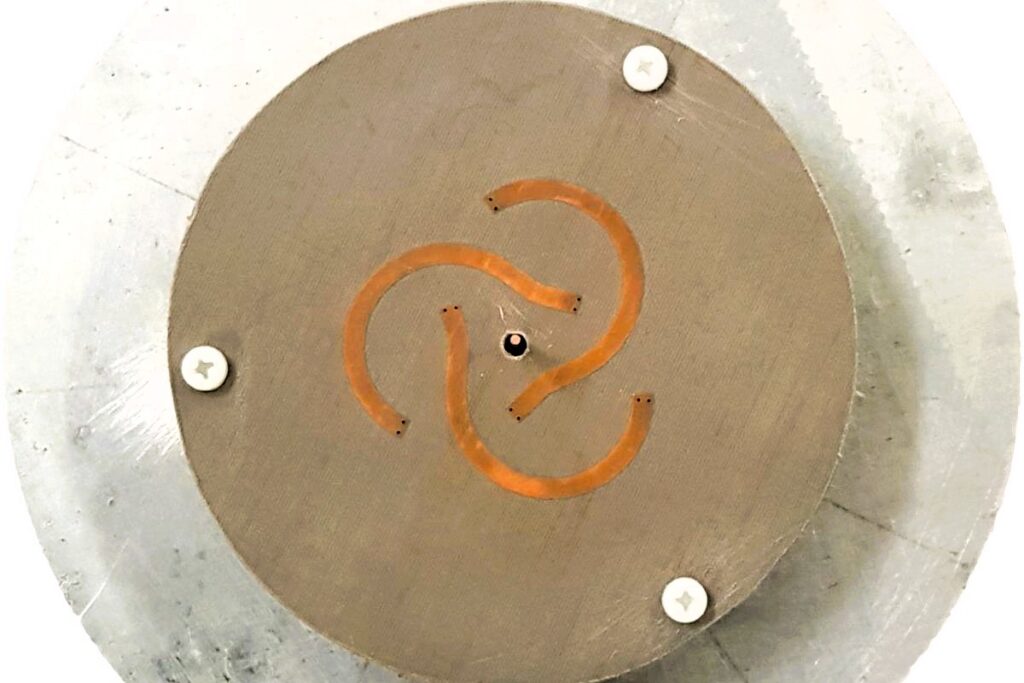The Indian Institute of Technology Kanpur (IITK) has made a significant breakthrough in the communication industry with the development of ‘Planar Trefoil Knot Antennas.’ This invention, a result of collaborative efforts between Saurabh Shukla, a Ph.D. student, and Prof. Ayyangar Ranganath Harish from the Department of Electrical Engineering at IIT Kanpur, has been granted Indian Patent No. 431872 for its unique applications in the field of communications.
The escalating use of wireless systems and wireless communications, along with the growing demand for antennas in consumer electronics such as smartphones, laptops, wearables, and tablets, is expected to drive the antenna market in the years to come.
Additionally, the advancement of smart antennas due to technological progressions further fuels market growth. The introduction of IIT Kanpur’s ‘Planar Trefoil Knot Antennas’ is set to revolutionize this expanding segment.

Prof. Abhay Karandikar, Director of IIT Kanpur, emphasized the significance of this technological development, stating, “This breakthrough holds far-reaching implications for India’s communication and other industries. The ingenuity and expertise demonstrated by our researchers at IIT Kanpur are showcased in this technology.
The ability of these antennas to produce both omnidirectional and directional patterns gives them a competitive advantage over existing alternatives in the market. We believe that this invention will transform the way antennas are utilized across various applications, contributing to the advancement of wireless systems and meeting the growing demand for smart antennas.”
The ‘Planar Trefoil Knot Antennas’ represent a significant advancement in the communication industry by offering unique applications. This innovative antenna structure can generate both omnidirectional patterns, radiating and receiving energy 360° horizontally around the antenna, and directional patterns, radiating and receiving wave power in specific directions.
This exceptional versatility makes it suitable for a wide range of end-users. Market segments such as telecommunication, healthcare, consumer electronics, aerospace, defense, and more stand to benefit from this technology.
The increasing utilization of wireless systems, communications, radio-frequency identification (RFID) tags for security purposes, and wireless computer networks, coupled with the rising adoption of antennas in consumer electronics, will drive the antenna market in the coming years.
The advent of 5G technology and the focus on developing printed circuit boards (PCB), liquid crystalline polymers (LCP), and modified polyimide (MPI) solutions further contribute to the anticipated growth.
The ‘Planar Trefoil Knot Antennas’ technology finds unique applications in various fields such as WiFi, WLAN, RFID, indoor communication systems, and radar systems. In contrast to the bulky 3D knot antennas currently available in the market, this invention offers a compact and cost-effective solution that can be easily integrated into PCBs, occupying less space.
Although the market potential is promising, certain challenges must be overcome, including manufacturing costs and the bulky structure of traditional antennas. However, the ‘Planar Trefoil Knot Antennas’ address these limitations, providing a practical and efficient alternative.
With the successful development of the ‘Planar Trefoil Knot Antennas’ and the subsequent grant of the Indian Patent, IIT Kanpur reiterates its commitment to pushing the boundaries of innovation and technology. This groundbreaking invention has the potential to reshape the communication industry and contribute to the advancement of wireless systems, benefiting numerous sectors and end-users.